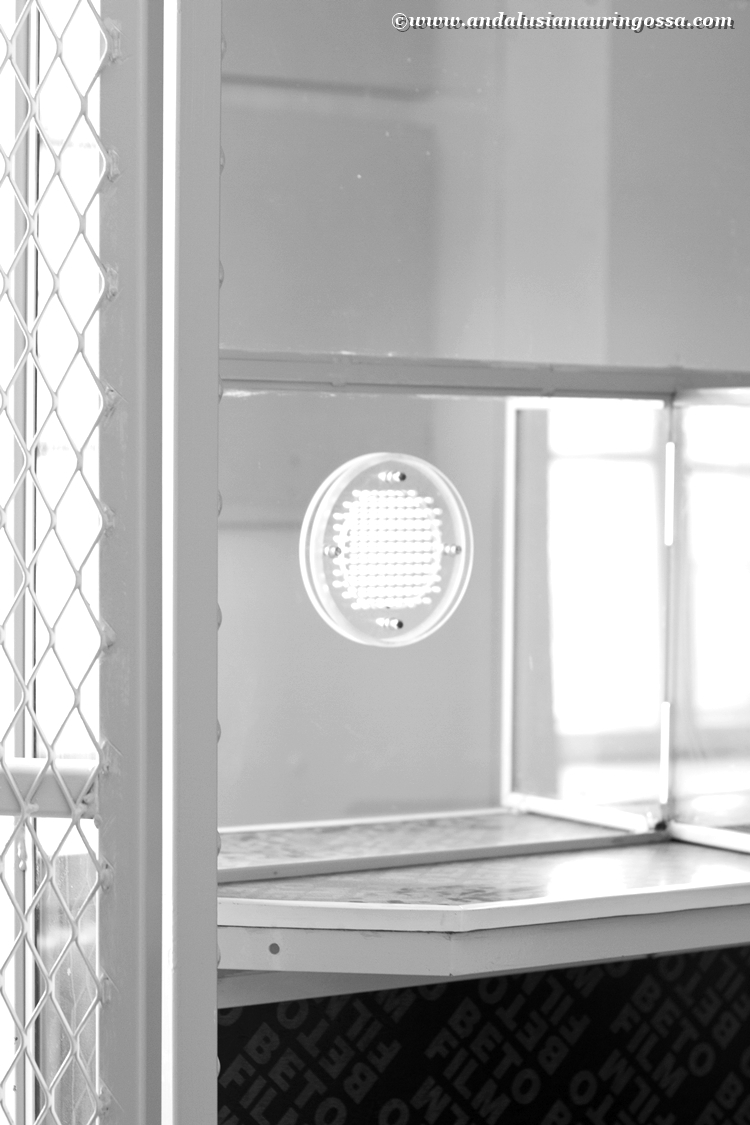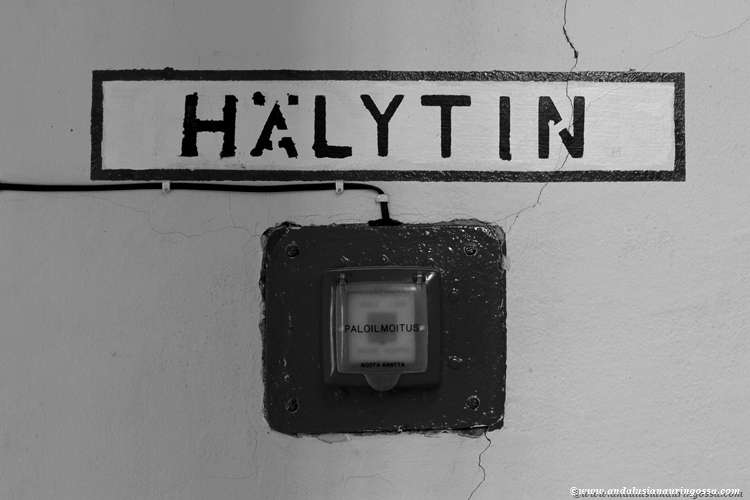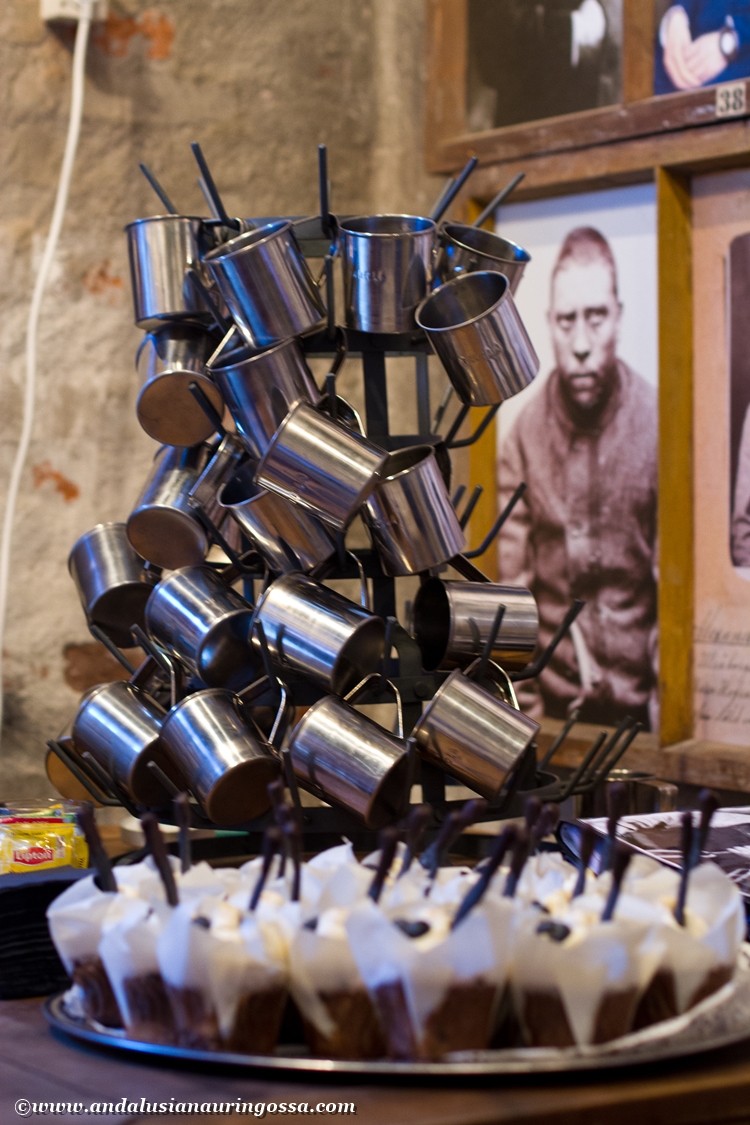Once upon a time Kakola prison used to house the most dangerous criminals in Finland. It has been closed for almost a decade now, but a visit there still makes one's skin crawl.
While Turku is a great foodie destination, there's plenty to see and do outside the restaurant scene, too. One of the most peculiar activities is visit to Kakola, former central prison of Turku.
Built in the last half of 19th century Kakola became the central prison of the time in 1862. It stayed in business until 2007, when the prisoners were moved to the newly built prison of Saramäki.
The prison consists of 4 cell blocks, each named after the direction they face. The Northern block used to house lifers, the Eastern block was used to accomodate snitches or those deemed particularly vulnerable.
The prison consists of 4 cell blocks, each named after the direction they face. The Northern block used to house lifers, the Eastern block was used to accomodate snitches or those deemed particularly vulnerable.
Kakola and its inhabitants have established their reputation in Finland so well, that just hearing the name will sent shivers down anyone's spine. No wonder: this place used to house the most infamous criminals and dangerous repeat offenders in the country.
In addition to cell blocks the area is also home to a chapel. And, this being Finland, the prisoners even had their own sauna. That, however, was luxury reserved for those better off: "accidents" such as falling off the benches and walking into a door were so commonplace that the vulnerable prisoners wouldn't dare to take their chances.
Part of the prison is built in Auburn style, devised by the Quakers. Reasoning behind this architecture was that once the inmates are isolated into their own cells, they have no choice but to contemplate their actions and repent.
Philadelphia style reflects another kind of thinking altogether and is familiar from every single prison movie and TV series (and my old high school!). As the name suggests it originated in US and saw the cells being built around an open central space.
The aim of this approach was rehabilitation through work, which also made the prisoners cover some of their upkeep with their contribution. The imates worked in the printing house and metal and wood workshops.
The aim of this approach was rehabilitation through work, which also made the prisoners cover some of their upkeep with their contribution. The imates worked in the printing house and metal and wood workshops.
Former prisons are like... concentration camps and, say, KGB detention centres. Rationally thinking they're just bricks and mortar, buildings erected by man. But the reality is very different. There's something creepy that just stubbornly lingers on even after decades of them being abandoned. Evil. You can almost feel it.
I doubt many of the people who wound up here were innocent, but I'm sure this place helped to strip them of the last shreds of humanity.
How people here have feared for their lives; all the dreadful things that have happened here.
How irrevocably different these people were when they left this place, compared to the people they were when they first entered through these gates. How can one adapt to the life on the outside?
And the there's the most difficult question of them all. Are there people who simply can't be rehabilitated? Can someone be just so profoundly evil the only solution is to shut them from the world for good?
I doubt many of the people who wound up here were innocent, but I'm sure this place helped to strip them of the last shreds of humanity.
How people here have feared for their lives; all the dreadful things that have happened here.
How irrevocably different these people were when they left this place, compared to the people they were when they first entered through these gates. How can one adapt to the life on the outside?
And the there's the most difficult question of them all. Are there people who simply can't be rehabilitated? Can someone be just so profoundly evil the only solution is to shut them from the world for good?
People adapted here...
... and built their lives here.
People have missed here...
... and loved. Had visits from relatives, conducted relationships, even married.
People have held on, counted down days and finally got out.
But these walls have witnessed the darker side of life, too.
People have met their death here, too. Both through their own hand and through others'.
Mutinies. Revenge.
People have broken the law, been sent to isolation, made their own moonshine and smuggled in everything possible from drugs to weapons.
People have escaped this place and they've wound back in here, too.
People have escaped this place and they've wound back in here, too.
Violence was rife, here too. At the begininning of 20th century increasingly large proportion of the inmates were here because of vilent crimes. 95% of them murders, killings or manslaughters.
There was a strict hierarchy among the inmates, which was result of both their status out there in the civil world and their criminal career. Those higher up cemented their position through use of emotional, physical and sexual violence.
In its absurdity it is intriguing that people so unable to follow the rules set by the society that surrounds them go out of their way to create this world, governed by a set of rules they've devised; rules disobeying which is not treated lightly.
Until fairly recent decades Kakola also used to have group cells. Horrible stories live on about the gang rapes people were subjected to in them...
There was a strict hierarchy among the inmates, which was result of both their status out there in the civil world and their criminal career. Those higher up cemented their position through use of emotional, physical and sexual violence.
In its absurdity it is intriguing that people so unable to follow the rules set by the society that surrounds them go out of their way to create this world, governed by a set of rules they've devised; rules disobeying which is not treated lightly.
Until fairly recent decades Kakola also used to have group cells. Horrible stories live on about the gang rapes people were subjected to in them...
The tour is unsettling, but interesting, not least because of the extremely knowledgeabe guides. The age limit (only over 15's) that's been set for this tour is, however, a testament to its horrifying content.
Enrance is €30 pp. For schedules and registration, please see here here.
Enrance is €30 pp. For schedules and registration, please see here here.
Next to the prison complex there's a villa that used to act as the prison warden's home. Even here the concentration camp associations are never too far off one's mind - didn't they, too, used to live exactly like this...?
These days it hosts a cafe...
... which doubles as a museum.
Fitting for the theme coffee is served in metal cups and cakes come with a file. This one's made of chocolate, though...!
One thing you should definitely take home with you is this: luscious sourdough bread they bake here.
What did you make of that? Do you have experiences from this kind of, more sinister destinations?
___________________
ANYONE FOR SECONDS?
SHARING IS CARING!









































No comments :
Post a Comment